1. Identify the types of teeth A, B, C, and D in the following diagram.
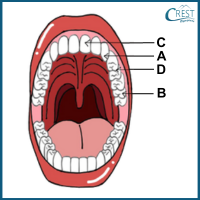
a) A: Molars, B: Premolars, C: Canines, D: Incisors
b) A: Canines, B: Molars, C: Incisors, D: Premolars
c) A: Incisors, B: Canines, C: Premolars, D: Molars
d) A: Canines, B: Incisors, C: Molars , D: Premolars
Answer: b) A: Canines, B: Molars, C: Incisors, D: Premolars
2. Pearl injured her shoulder accidentally and now experiences limited rotational movement in her right arm. Which type of joint might have suffered the injury?
a) 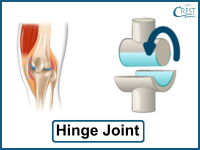
b) 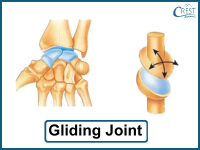
c) 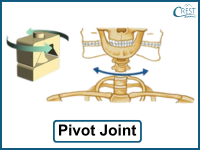
d) 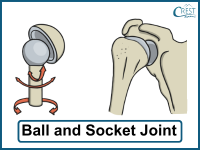
Answer: d) The ball and socket joint, such as the shoulder joint, provides the highest range of motion, including rotation. An injury to this joint can restrict rotational movements and cause difficulty in freely rotating the arm.
3. Which type of muscle would be responsible for the contractions of the digestive system to move food along the digestive tract?
a) Involuntary muscle
b) Cardiac muscle
c) Skeletal muscle
d) Voluntary muscle
Answer: a) Involuntary muscles are responsible for the rhythmic contractions of the digestive system. These muscles work automatically and are not under conscious control, allowing them to generate the coordinated movements required to propel food through the digestive tract.
4. How does the muscular system work together with the skeletal system to enable movement?
a) Muscles provide support and protection to the bones.
b) Muscles produce heat to maintain body temperature.
c) Muscles attach to bones and generate force to create movement.
d) Muscles produce nutrients for bone growth and development.
Answer: c) The muscular system and the skeletal system work together to enable movement in the body. Muscles are attached to bones through tendons, and when the muscles contract, they generate force that pulls on the bones, causing movement at the joints.
5. Match the following organ systems with their respective functions.
| Column I |
Column II |
| 1. Respiratory system |
A) Regulation of body temperature |
| 2. Digestive system |
B) Coordination of body activities |
| 3. Nervous system |
C) Exchange of gases |
| 4. Cardiovascular system |
D) Breakdown and absorption of nutrients |
a) 1:A, 2:C, 3:B, 4:D
b) 1:C, 2:D, 3:B, 4:A
c) 1:C, 2:D, 3:A, 4:B
d) 1:D, 2:C, 3:A, 4:B
Answer: b) The respiratory system is responsible for the exchange of gases, including oxygen and carbon dioxide.
The digestive system is involved in the breakdown and absorption of nutrients from food.
The nervous system coordinates body activities and sends signals throughout the body.
The cardiovascular system, specifically through blood circulation, helps regulate body temperature.






